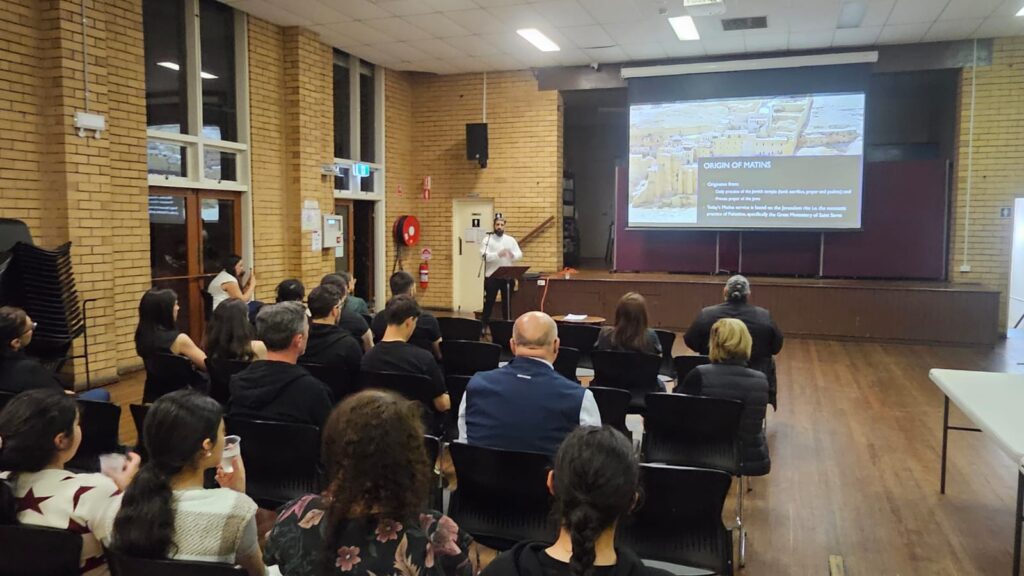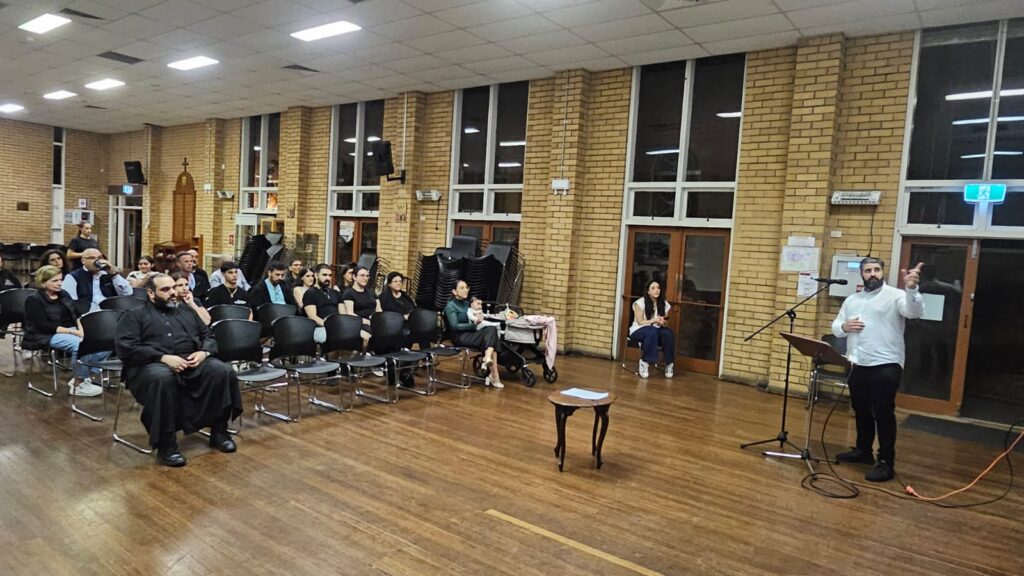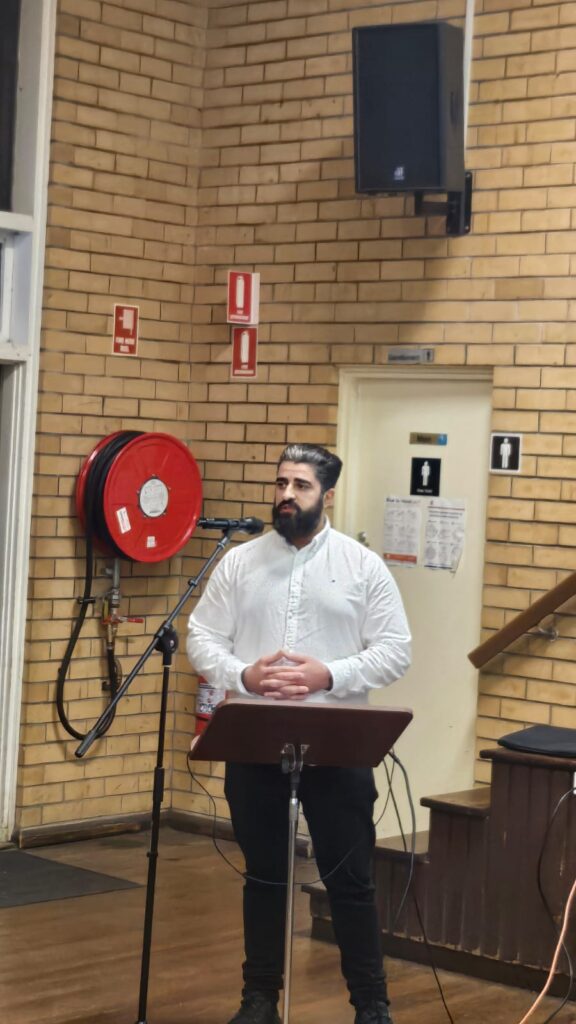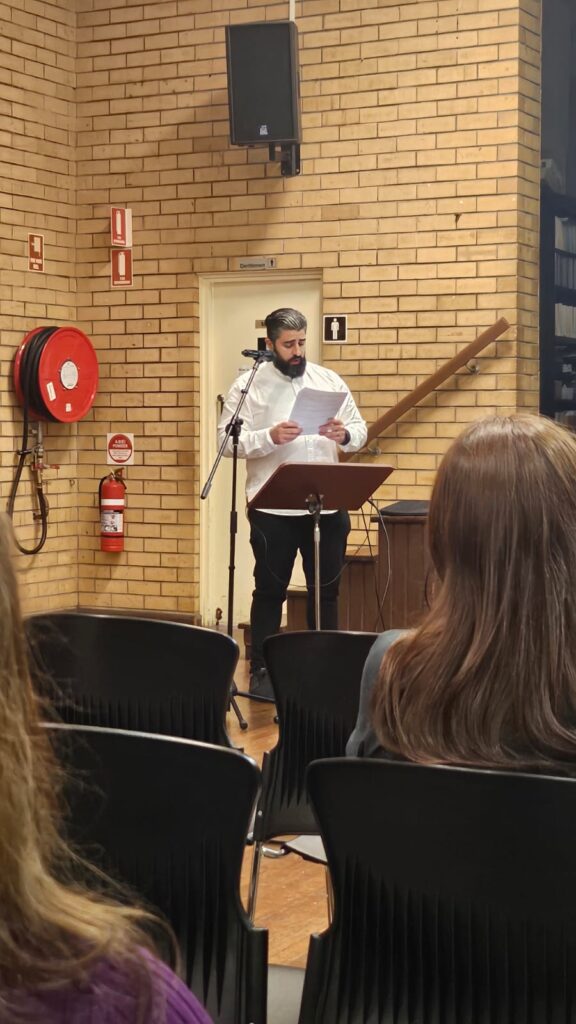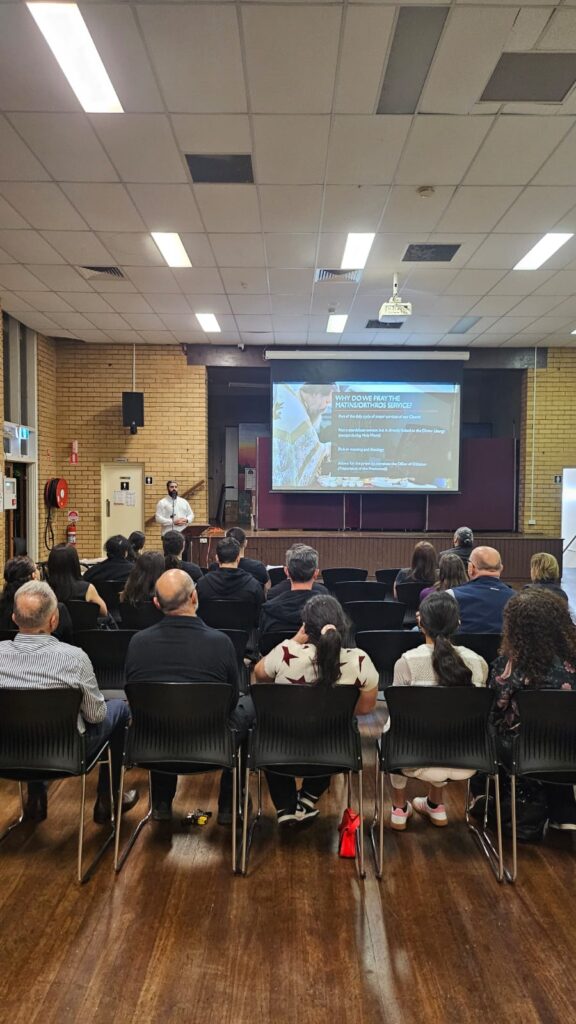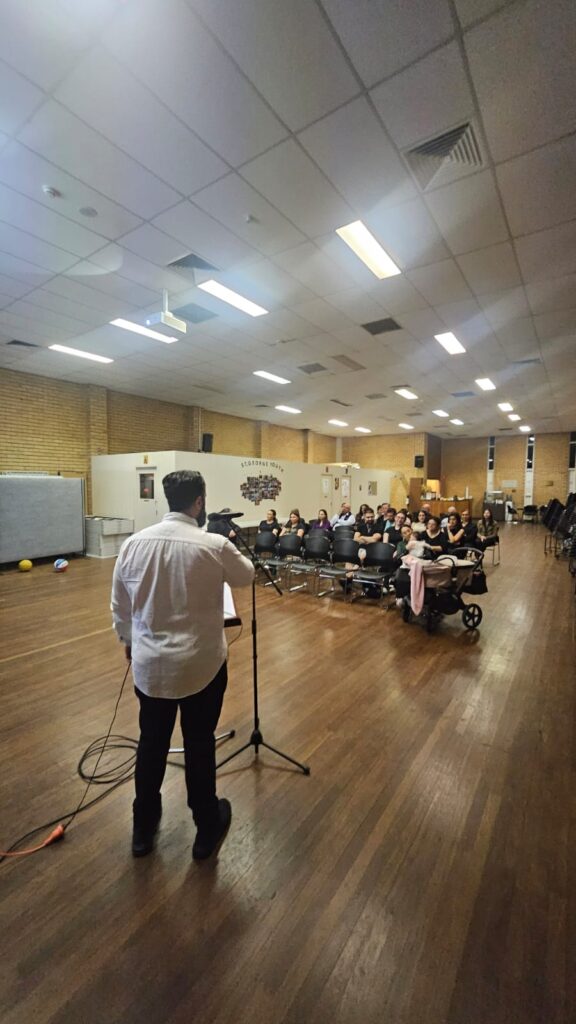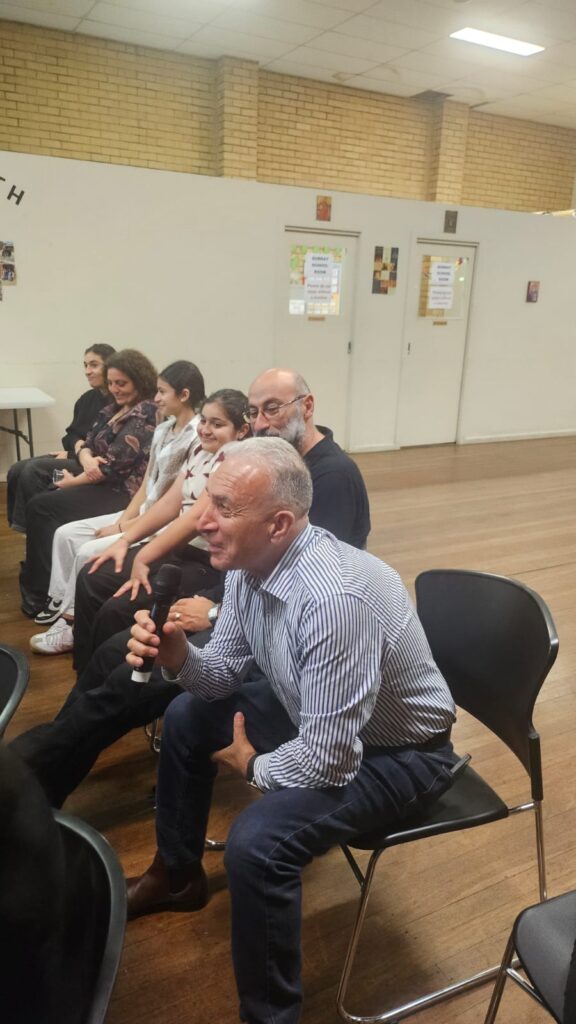Spiritual Talk: The Matins / Orthros Service
On the evening of Tuesday the 30th of September, the St George Bible Study group was blessed to be joined by Andrew Melick for a talk on the Sunday Matins service, a service described as “living waters that flow…”. His insightful presentation outlined the structure of the Matins and explored the meaning and purpose of the traditions that take place during the service.
This spiritual talk was perfect for anyone curious about the origins of our prayers and traditions in the Matins service. Andrew explained how the origins of today’s Matins are rooted and were practiced in the early monasteries and is based on the ancient Jewish rites, including the offering of a lamb sacrifice, prayer, and the recitation of psalms. One key tradition he highlighted was the raising of incense. The heavy use of incense during the service is not a symbolic gesture, rather it serves to separate those praying inside the church from the distraction of the world outside, creating a sacred space where the faithful can focus on their prayers and communing with God.
Andrew went through the content of the Matins and gave the context to the service. He explained that the Sunday Matins is a time to thank God for a new day and to thank God for his creation. The service beginning with the Hexapsalms (six psalms), which are read in a solemn and mournful tone. These prayers are read and not chanted, to convey the sense of repentance. During this part of the service, all movement is restricted, even making the sign of the cross isn’t advised. As the service continues, the tone shifts. The prayers transition to finding God’s salvation from the sorrows, and then becoming joyous as we reach the blessed hymns of resurrection.
Attending tonight’s spiritual talk helped us better understand and appreciate what happens during the Sunday Matins service. It shed light on the deeper meanings behind even the small traditions. For example, when the priest stands on the right side of the altar to read the Gospel during the Gospel Rite, it is based on the angel standing at the right side of the tomb when he announces the resurrection of Jesus.
We are grateful to Andrew for taking the time to explain the Matins in such depth. Thanks to what we learnt, we will be able to reflect more deeply the next time we attend a Matins Service, praying with better understanding and drawing closer to God.


